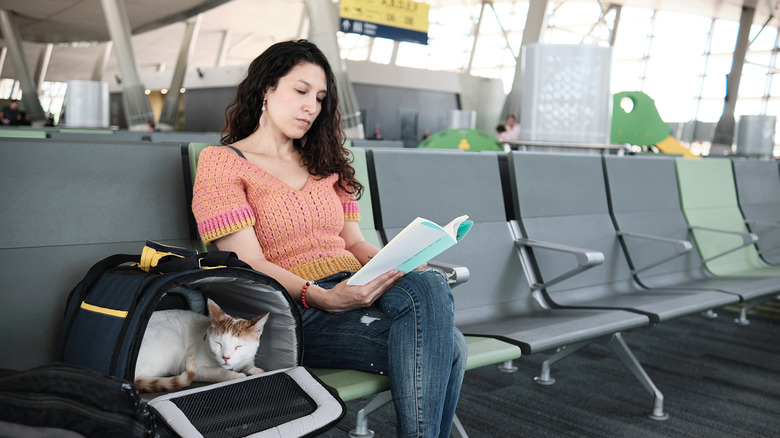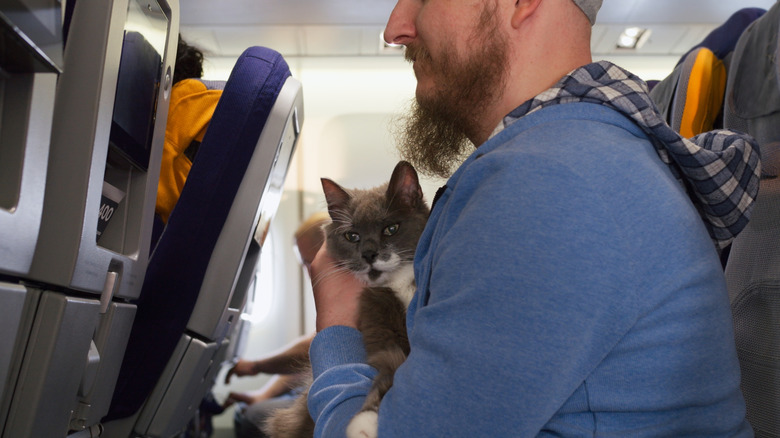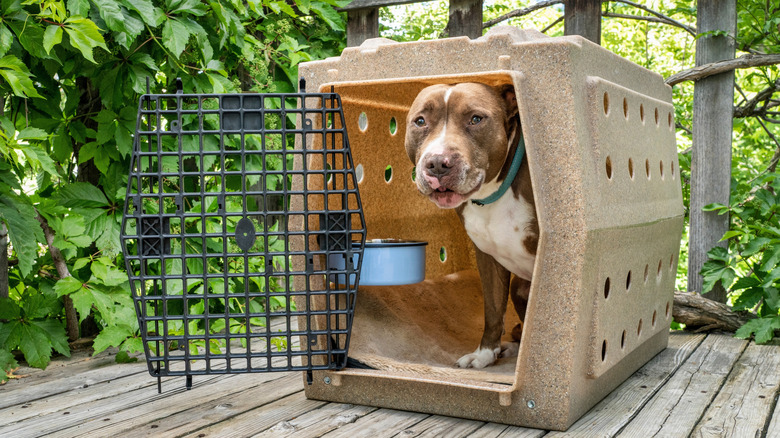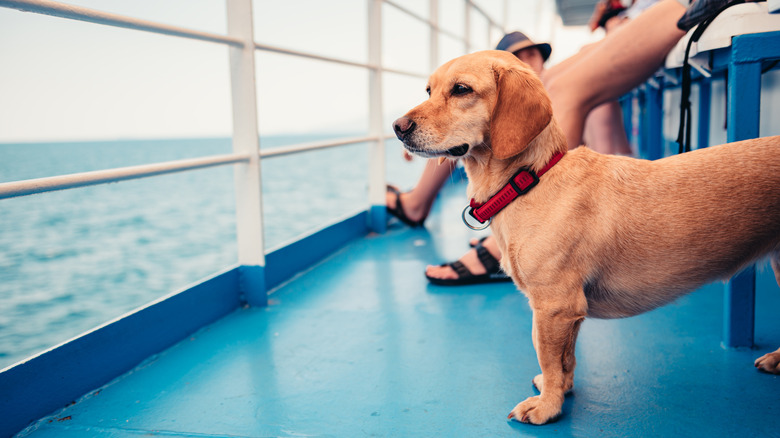Pet Passports: The Rules You Need To Know Before You Travel Internationally
When planning to travel internationally with your furry companion, understanding the rules and requirements for pets is essential. Unlike traditional passports for humans, a "pet passport" isn't a single document but a collection of paperwork that proves your pet meets the health and safety standards of your destination country.
A typical pet passport includes records of vaccinations, health certificates, and microchip information. These documents are crucial for proving that your furry friend is healthy and free from diseases, such as rabies, that could threaten other animals or people.
However, the rules surrounding pet travel are far from universal. Requirements can vary widely depending on the country you're visiting, with some destinations enforcing stricter regulations like mandatory quarantines or additional health tests when flying with a cat or dog. This patchwork of policies makes proper preparation vital for avoiding travel delays or complications at customs.
General international requirements for pet travel
Navigating international travel with your pet begins with understanding and fulfilling essential documentation requirements, starting with a health certificate. This document, issued by a USDA-accredited veterinarian, often needs to be endorsed by the USDA and must be completed within a specific time frame before your departure —typically no more than 10 days prior.
Another critical requirement is proof of rabies vaccination, which is mandatory for nearly all countries. Timing is a key factor, as many destinations require the vaccine to be administered at least 21 to 30 days before travel. For countries classified as rabies-free, the protocols can be even stricter, sometimes involving additional tests or extended waiting periods.
Microchipping is also a common requirement for pet identification. Many countries stipulate that the microchip must meet ISO (International Organization for Standards) standards, which involve a 15-digit numeric code. Importantly, microchipping is often required before administering the rabies vaccine to ensure the vaccine can be correctly linked to the pet's unique ID.
Country-specific rules for pet travel
Navigating the labyrinthine regulations of international pet travel necessitates a clear understanding of your destination's specific rules. For instance, pet travel within the European Union (EU) requires an official animal health certificate for pets entering from outside the EU. In cases where an EU pet passport is available, it can streamline the process. To meet EU requirements, pets must be microchipped, vaccinated against rabies, and wait at least 21 days after the vaccination before traveling. Some EU countries, such as Finland and Ireland, also mandate tapeworm treatment for dogs within a set timeframe before entry.
The United Kingdom enforces similar rules, requiring either a health certificate or an EU pet passport. Dogs traveling to the UK must undergo tapeworm treatment before entry, and the country imposes breed restrictions, prohibiting specific breeds like pit bulls and Japanese tosas. Meanwhile, Australia has some of the strictest protocols, requiring an import permit and a 10-day quarantine at a government-approved facility. Pets traveling to Australia also need to undergo a series of health checks, including rabies vaccination and, in some cases, additional tests.
Returning to the United States also involves specific requirements. As of August 2024, all dogs entering the U.S. must be microchipped. For pets coming from high-risk rabies countries, proof of rabies vaccination and submission of a CDC Dog Import Form will be necessary prior to travel. These country-specific regulations highlight the importance of thorough research and preparation. Missing even one step, such as a mandatory treatment or documentation, could lead to delays or travel disruptions.
Airline policies for pet travel
Airline policies regarding pet travel can vary widely. Small pets, such as cats or small dogs, are often allowed to travel in the cabin if they fit in an airline-approved carrier that can be stored under the seat. You will also want to take extra preparations prior to flying with a puppy. Size and weight limits differ by airline, and reservations are typically required well in advance due to restrictions on the number of in-cabin pets per flight.
For larger pets, traveling in the cargo hold is often the only option. While generally safe, this can pose challenges for certain breeds, especially brachycephalic (snub-nosed) animals like bulldogs, which are prone to respiratory issues. Many airlines restrict cargo travel for these breeds entirely or impose limits during extreme weather conditions to ensure the safety of all pets.
Costs and required documentation also vary. Airlines typically charge fees for pet travel, with rates depending on the pet's size and travel method. Proof of vaccinations, a health certificate, and an airline-compliant pet travel carrier are standard requirements. Researching pet relief areas at your departure and arrival airports can help assure your pet's comfort throughout the journey. By preparing early and adhering to airline policies, you can help make the trip as smooth as possible for your furry companion.
Special considerations for restricted breeds
Traveling internationally with certain pet breeds often presents unique hurdles, as many countries and airlines enforce restrictions based on safety concerns or health risks. Breed-specific legislation in destinations like the United Kingdom and Australia prohibits the entry of breeds such as pit bulls, Japanese Tosa, and mastiffs. These bans, often controversial and rooted in perceived safety threats, require pet parents to thoroughly research their destination's regulations in advance. Ignorance of these rules can result in denied entry or the need to make last-minute, stressful alternative arrangements.
For owners of restricted breeds, seeking assistance from professional pet relocation services can provide a pathway through the complexities of international travel. These experts may be found through organizations like the International Pet and Animal Transportation Association. They can offer guidance on navigating breed-specific regulations, obtaining the necessary documentation, and finding viable travel solutions. Alternatively, exploring pet-friendly destinations with more lenient policies can ensure a smoother and less restrictive experience. Careful planning and an in-depth understanding of the rules are essential to minimize stress and ensure safe travels for both pets and their families.
Traveling internationally with pets via train and ship
Traveling internationally with pets by rail or ship offers an alternative to air travel that can be more relaxed for both pets and humans. In Europe, train services like Eurostar and NS International allow pets to travel under specific conditions. Eurostar permits small pets in carriers, while NS International and other providers may have size-based guidelines and designated compartments for pets. Rail Europe offers a comprehensive guide to traveling with pets across the continent, emphasizing the importance of checking individual train policies beforehand. In North America, Amtrak allows small pets on select routes with advance reservations, and Canada's VIA Rail accommodates pets on certain trains, provided prior arrangements are made.
Sea travel is also becoming increasingly pet-friendly. Services like BC Ferries in Canada offer designated pet areas and allow pets to stay in vehicles during the voyage. Meanwhile, cruise lines are beginning to cater to pet owners. The Margaritaville at Sea cruise line is planning a dog-friendly voyage in November 2025. This specialty cruise will accommodate up to 250 dogs and feature pet-focused activities and amenities designed to make the experience enjoyable for all.
Japan has even introduced innovative rail options for pet parents. The JR East "Wanderful Train" offers select routes where dogs can travel outside of carriers, providing a more comfortable journey. Whether by rail or ship, these options underscore the growing efforts to make travel easier for pets. As with any mode of transportation, make sure to research the specific policies of each service to maintain compliance and safeguard the smoothest, most paw-some journey possible.





